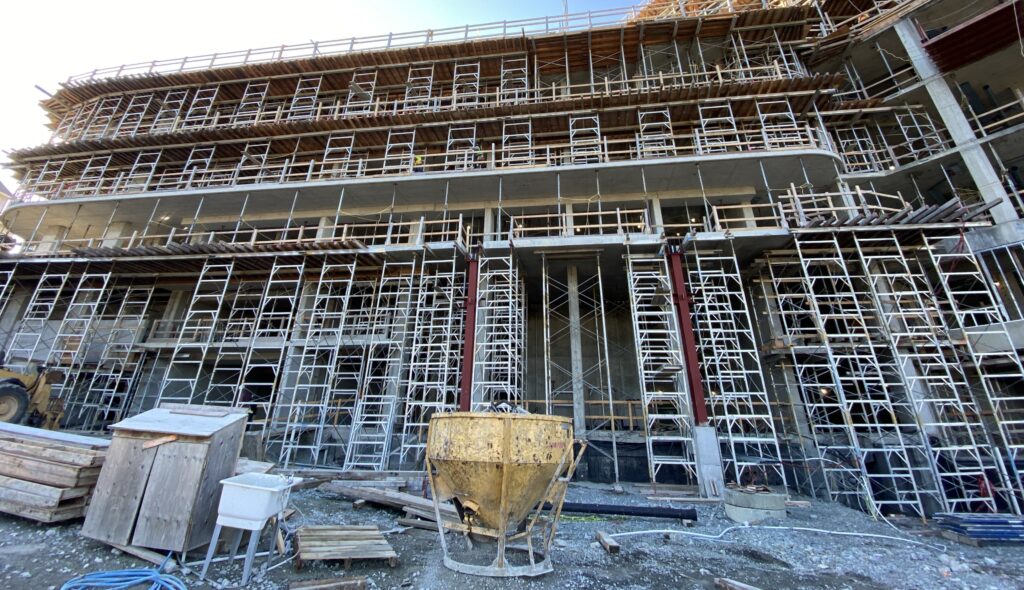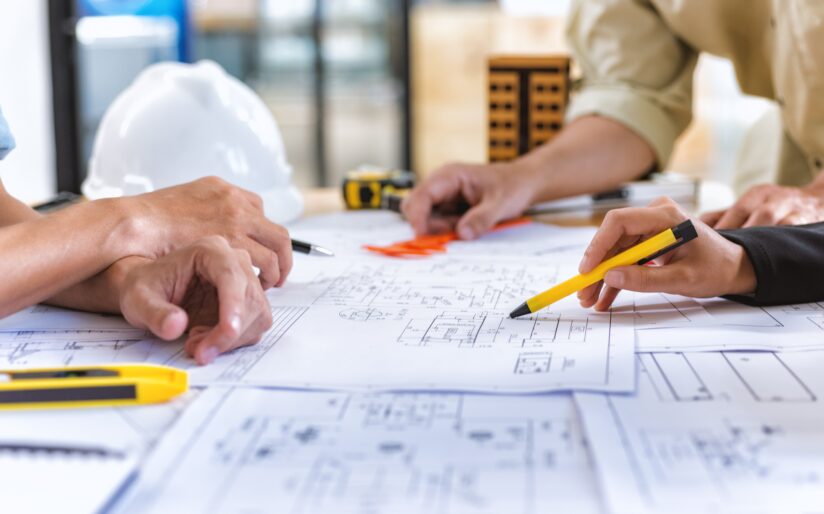As building designs become more complicated, construction engineers play a critical role in the construction process, ensuring the physical structure is built with safety and durability in mind without compromising on the architectural vision and cost implications to the contractor. In fact, according to Evan Cambridge, Project Engineer, Construction & Specialty Engineering with RJC Engineers, today’s buildings are becoming much harder to build despite improvements in technology, tools, and methods. To facilitate a safe and successful outcome, construction engineers are there to ask the ‘hows’ and ‘whys’ that correspond with each aspect of the building project.
“Construction engineers are an important piece of the puzzle,” he explains. “We work alongside the contractor to figure out the best way to proceed using the available materials and labour in the most efficient way. As technology progresses and the demand for architecturally appealing buildings increases, it’s our job to solve the problems and safely bring the building to life.”
 Cambridge says his team is typically brought on board before the contractor has even dug the hole for the project. This early perspective helps construction engineers gain a fuller understanding of what the job entails and establish the best path forward, solving inevitable issues as they arise.
Cambridge says his team is typically brought on board before the contractor has even dug the hole for the project. This early perspective helps construction engineers gain a fuller understanding of what the job entails and establish the best path forward, solving inevitable issues as they arise.
“We determine the process of how to build, often using formwork and materials that the contractor is using on different jobs,” he says. “It’s a bit like a grown-up game of Tetris. We also heavily assist the contractor during construction by solving problems as they come up. Our team has a broad range of skills, so we’re able to foresee issues that others are not aware of on site.”
Common challenges at the worksite
Oftentimes, according to Cambridge, its the location of the building that proves to be the trickiest part of the construction. From nearby waterways to the proximity of the surrounding structures, project sites aren’t always easy to navigate, and construction engineers need to pay particular attention to challenges that lay ahead.
“We have been involved with projects where the wall we are building or demolishing is an inch away from an occupied shopping centre that cannot be closed down,” he says. “It’s our job to figure out how to safely manage that and fulfill the project requirements.”
The building components themselves can also create complications. Whether it’s large, cantilevered slabs or sloping columns high up on a building, these types of design features must be approached in a way that prioritizes the safety of both the workers and the public.
“We need to look at the plans and forecast how certain building components are going to be built and determine how those components may impact safety,” he says. “No matter what, safety is kept as a top priority.”
Limiting worksite hazards
That’s not to suggest engineers intend to interfere with the architectural vision. On the contrary, Cambridge says they are there to support that vision and ensure it comes to life in the safest and most cost-effective way possible.
“I believe anyone can build anything, but engineers have the skills to tell you exactly how much material is required to build it effectively, and ensure that the construction is done right,” he says. “Workers on the job should have no doubt the temporary platforms they work on, and the overall building structure, is safe.”
In other words, engineers also contribute to a safer construction site. In BC, for example, engineers are required to review temporary platforms before they can be used to support the weight of wet concrete and the workers pouring it. Typically, platforms are built quickly with the intention of being dismantled a few weeks later, so this requirement helps limit any associated hazards.
“There is a lot to look at, and it takes a trained eye to catch any missing pieces in the puzzle,” he says. “It can be like looking for a needle in a haystack.”
And then there are those issues that arise out of nowhere requiring emergency structural reviews. Two such incidents Cambridge recalls include a car that drove through the wall at a local mall, and a retaining wall that collapsed on a construction site.
“In both situations we were contacted by First Responders and city officials to give emergency reviews before anyone else, including the firefighters, entered the scene,” he says. “These situations were stressful and a lot of decisions needed to be made quickly—which happens regularly on jobsites, too.”
For more about the role of construction engineers, visit www.rjc.ca or contact Evan Cambridge directly.









